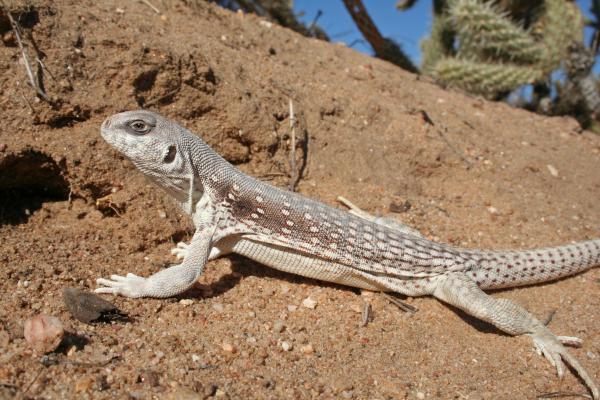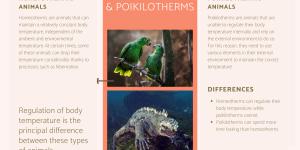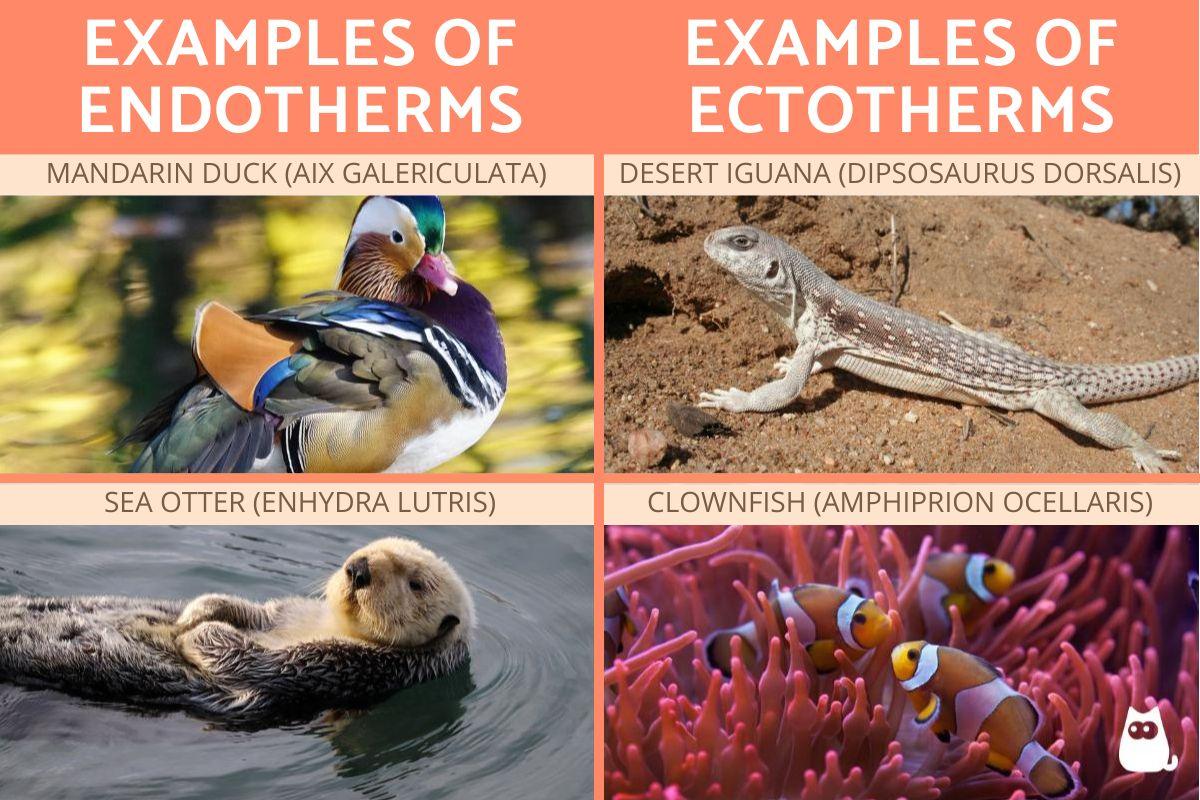What Is the Difference Between Warm and Cold-Blooded Animals?


In the animal kingdom, one of the most fascinating distinctions lies in how different species regulate their body temperature. Endothermic and ectothermic animals represent two contrasting strategies for maintaining internal conditions, each with its own set of advantages and challenges. Endothermic animals, commonly known as warm-blooded, can generate and regulate their own body heat, allowing them to thrive in a wide range of environments. In contrast, ectothermic animals, or cold-blooded creatures, rely on external sources of heat to regulate their temperature, which influences their behavior and habitat choices.
This comparative guide by AnimalWised explores the differences between warm and cold-blooded animals, as well as their unique traits, survival strategies, and more.
What are endothermic animals?
Endothermic animals, also known as warm-blooded animals, are organisms capable of regulating their body temperature internally through metabolic processes, independent of external environmental conditions.
The term “endothermic” comes from the Greek word "endon," meaning "inside," highlighting that these animals generate heat internally. This allows them to maintain a stable core temperature, which gives them the advantage of being active in a wide range of climates.
This temperature regulation relies on metabolic heat produced by organs and tissues like the heart, liver, and muscles. However, this comes with high energy demands, as endothermic animals need to consume large amounts of food to fuel these processes. This metabolic activity prevents heat from dissipating quickly, allowing endotherms to sustain activity even in colder environments.
During certain periods, such as hibernation, some endothermic animals, particularly mammals, can temporarily reduce their metabolic activity and body temperature to conserve energy. This is especially useful in extreme climates where food may be scarce or temperatures too harsh for regular metabolic function.
To cope with temperature fluctuations, endothermic animals have developed various adaptations. For example, when exposed to cold, many of them shiver, which involves rapid muscle contractions that generate heat. Some species also rely on fat burning, particularly brown adipose tissue, to produce additional warmth. In contrast, when facing high temperatures, animals like dogs pant, while others, such as humans and horses, sweat to cool down through evaporation. Some species, like elephants, flap their large ears to dissipate heat more effectively.
Many endothermic animals have fur or feathers that insulate their bodies and help retain heat. This works because the tiny spaces between individual hairs or feathers trap air. Since air is a poor conductor of heat, it creates a barrier that helps to prevent heat from escaping the animal's body. This layer of trapped air acts as a protective cushion, insulating the animal from the colder external environment.

What are ectothermic animals?
Ectothermic animals, commonly referred to as "cold-blooded," regulate their body temperature primarily through external environmental conditions, such as absorbing heat from the sun or cooling down in the shade.
The Greek term "ecto-" means "outside," aligning with their reliance on external heat sources. This group includes reptiles, amphibians, fish, and many invertebrates, which are generally more sluggish when temperatures drop and more active when warmed by external heat. Unlike endothermic animals (warm-blooded), ectotherms do not produce enough internal heat to maintain a stable body temperature, so their body temperature fluctuates with the environment.
While most ectotherms cannot maintain their body heat independently of their surroundings, there are exceptions. For instance, certain species of fish can generate heat through their strong muscles, allowing temporary control over body temperature. Some reptiles, like pythons, exhibit unique behavior when protecting their eggs—muscle contractions increase their body temperature to warm the eggs.
Behavioral adaptations are essential for ectothermic animals to regulate their body temperature. When ectothermic animals need to warm up, they often engage in basking behavior. This involves exposing their bodies to direct sunlight, allowing the sun's rays to heat them up. Conversely, when they need to cool down, they seek out shade or other cooler areas. This helps to prevent their body temperature from rising too high.
Ectothermic animals generally have lower metabolic rates compared to endotherms and may enter periods of dormancy (such as hibernation or torpor) to survive extreme temperatures or food scarcity. This adaptation helps them survive in environments with limited food, as they require less energy than endotherms, which constantly need to fuel their internal heat production.

Differences between endothermic and ectothermic animals
Heat production and regulation:
- Endotherms: these animals, often referred to as "warm-blooded," generate substantial internal heat through metabolic processes. They possess mechanisms to retain this heat, ensuring a relatively constant body temperature, regardless of the external environment.
- Ectotherms: commonly known as "cold-blooded," these animals rely primarily on external heat sources, such as sunlight or warm surfaces, to regulate their body temperature. Their internal heat production is minimal.
Metabolism:
- Endotherms: to maintain their stable body temperature, endotherms have a higher metabolic rate. This means they burn more energy, requiring a more frequent intake of food.
- Ectotherms: with a lower metabolic rate, ectotherms conserve energy, allowing them to survive for extended periods without food. However, their activity levels are often limited in colder environments.
Hibernation and brumation:
- Endotherms: some endotherms, particularly mammals, undergo hibernation. This state involves a significant reduction in metabolic rate and body temperature, allowing them to conserve energy during periods of scarcity.
- Ectotherms: reptiles and some amphibians may experience brumation, a state similar to hibernation. While they may become inactive and slow their metabolism, their body temperature doesn't typically drop as dramatically.
Reproductive strategies:
- Endotherms: many endotherms, particularly mammals and birds, have more complex reproductive strategies, including internal fertilization, gestation periods, and parental care. This allows them to invest more energy into fewer offspring, ensuring a higher survival rate.
- Ectotherms: ectotherms often have simpler reproductive strategies, such as external fertilization and the laying of large numbers of eggs. This is a strategy to compensate for the higher mortality rates among offspring due to their reliance on external factors for survival.
Longevity:
- Endotherms: endotherms generally have shorter lifespans compared to ectotherms. This is likely due to their higher metabolic rate, which can lead to increased cellular damage over time.
- Ectotherms: ectotherms often have longer lifespans, especially those that live in stable environments. Their slower metabolism and reduced energy expenditure may contribute to their longevity.
Sensory systems:
- Endotherms: endotherms generally have more complex sensory systems, allowing them to perceive a wider range of stimuli, such as temperature, sound, and light. This is particularly important for animals that rely on active hunting or social interactions.
- Ectotherms: ectotherms may have more specialized sensory systems adapted to their specific environments. For example, some reptiles have pit organs that can detect infrared radiation, allowing them to locate prey in the dark.
Other differences:
- Behavioral adaptations: ectotherms often exhibit behaviors to regulate their temperature, such as basking in the sun or seeking shade. Endotherms, while also having behavioral adaptations, have more internal mechanisms for temperature control.
- Habitat range: endotherms can inhabit a wider range of environments, including colder regions, due to their ability to maintain a constant body temperature. Ectotherms are more restricted to environments that provide adequate external heat sources.
Curious about how cold-blooded animals survive winter? Discover the fascinating world of brumation in our related article.
Examples of endothermic and ectothermic animals
Now that we understand the definitions of endothermic and ectothermic animals, let’s explore examples from both groups.
Examples of Endotherms:
- Shoebill (Balaeniceps rex): this large bird is found in the marshes and swamps of eastern and central Africa. It relies on its metabolic heat to maintain body temperature, making it an endotherm.
- White Stork (Ciconia ciconia): common across Europe and parts of Asia and Africa, this migratory bird maintains a stable body temperature through internal metabolic processes.
- Mandarin Duck (Aix galericulata): known for its vibrant plumage, this duck species from East Asia is also endothermic, producing heat internally to maintain a stable body temperature.
- Gray Wolf (Canis lupus): as an apex predator, the gray wolf relies on its high metabolic rate to regulate its body temperature, even in cold environments.
- Sea Otter (Enhydra lutris): native to the Pacific coast, the sea otter uses its dense fur and metabolic heat production to stay warm in cold ocean waters.
Examples of Ectotherms:
- Desert Iguana (Dipsosaurus dorsalis): this reptile thrives in the extreme heat of the southwestern U.S. deserts, using external heat sources to regulate its body temperature.
- Savannah Monitor (Varanus exanthematicus): found in Africa, this monitor lizard is ectothermic and relies on external heat sources for its metabolic processes.
- Common Clownfish (Amphiprion ocellaris): famous for its symbiotic relationship with sea anemones, the clownfish is ectothermic, relying on the temperature of the surrounding water to regulate its body heat.
- Portuguese Man-of-War (Physalia physalis): this marine siphonophore drifts with ocean currents, and its body temperature depends entirely on the surrounding water.
- Goliath Spider (Theraphosa blondi): the world’s largest spider by mass, this ectotherm depends on environmental temperatures to regulate its bodily functions.
Curious about the most diverse group of warm-blooded animals? Get to know mammals and their fascinating world in our other article.

If you want to read similar articles to What Is the Difference Between Warm and Cold-Blooded Animals?, we recommend you visit our Facts about the animal kingdom category.
- Arenas, M. (2015). All you need is biology . Available at: https://alyouneedisbiology.wordpress.com/2015/09/19/animales-sangre-caliente-fria/
- Grigg, G.; Nowack, J.; Bicudo, JEPW; Bal, NC; Woodward, H.N.; Seymour, R.S. (2022). Whole-body endothermy: ancient, homologous and widespread among the ancestors of mammals, birds and crocodylians. Biological reviews of the Cambridge Philosophical Society , 97 (2), 766–80. Available at: https://doi.org/10.1111/brv.12822
- Hickman, C.; Roberts, L.; Parson A. (2000). Comprehensive principles of zoology . McGraw Hill Interamericana: Spain.








